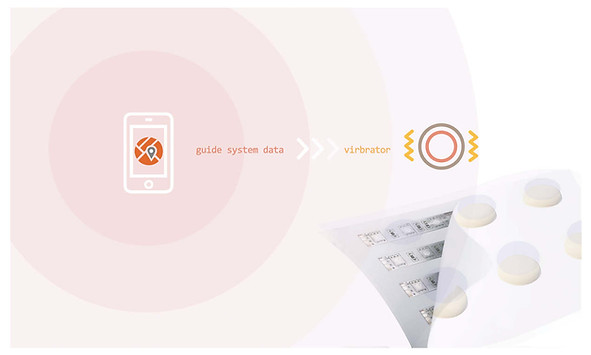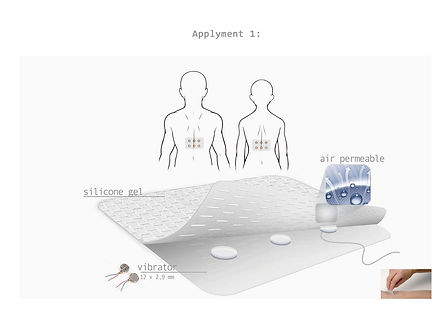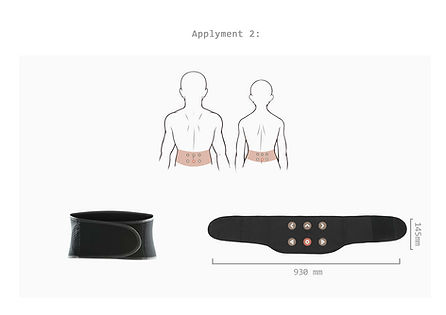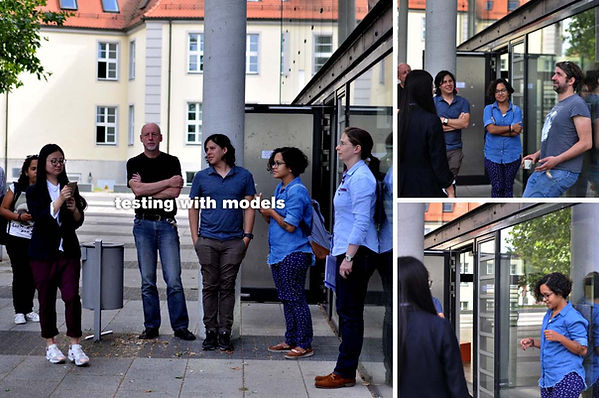

Feel the way
'Feel the way' is a tactile-based artefact for location finding. It aims at improving the visual overloading scenarios(e.g., driving, biking and walking) by substituting the geographical and orientational information usually provided by visual-based devices.
Problem of visual-based interfaces

Methods
Observation
Interview
Heustitic Evaluation
Participatory Design
Usibility test
End-user
User needs route guidance
Duration
Jan.2016 - Jun. 2016
My Role
Design researcher
Design Context
The Challenges
There is increasing criticisms about technology that has had a huge impact on the way we communicate with each other. While it connected people at distances, it broke the way of human interaction in real life. People stay close physically but far away from each other cognitively, decreased human-natural interaction become a problem more than ever.
One of the main problems is that our daily using devices are visual-based, and people are easily distracted from their physical environments.
In the meanwhile, subtitutional interfaces are overlooked for the non-visual impaired users.
-
Technical limitation in building a tactile-based interface
-
No experience in non-visual based product
-
Design and test tactile signal which is intuitive for users
Design Outcomes
Tested with 10 users and gain positive feedback (10 out of 10)
The simple vibrate prototype is tested with 10 users in walking and driving scenarios. 10 out of 8 are satisfied with the signal guidance, 2 users felt it cannot cope with the complex routes(e.g overpasses) and point out the limitation of function, for example, planning for public transportation and check changes of transportation. And those function cannot be substituted by the tactile interface.
People could recognise the vibrate signals and arrive destination
10 out of 9 arrive at the destination in the test.
The signal that designed for varied command: start, direction, degree of distance and arrive. The start, direction and arrived signals were well-perceived by testers without guidance, however, degree of distance was confusing the user. It shows that tactile signal needs to keep simple for starters.
DESIGN QUESTION
How we improve the interaction experience
between people and technology
&
between people and people?
Design and test
A tactile based interface in location finding
User needs
Less visual-based interface alleviated sight issues
Quality of interaction with people
New sensory interface for non-disabled users
Gain information in overloaded scenarios
Design idea
Explore other sensory interfaces besides Visual/Audio
Augment Reality (see project "faceglARss")
Location finding as an instance for visual overloading experience for non-visual-impaired users
Design idea

Existing map application send the signal to the tactile based device
Signal transfer to the vibration signals

Heuristic evaluation
An instance for location finding

6 vibration spot represents different commands
Degree of vibration represents the distance



Key Findings
Users need basic intructions
Missing visual interface to connect the tactile interface
The real use scenarious
Design implication
The product attach to daily using items
An application that link device and product
Test it in real-using scenarious
Re-design
Bridging with handphone
New design implication

Phone case

Car-seat cushion
Connect with Visual-based Interface

Pre-study
Discover problems in Visual-Based Communication
Key Findings
Some users estimated one-third of their days spent on the visual-based interfaced device
All user experienced visual overloading during driving
Most users want to make changes in using technology.
Most users concern about the near-sight problem
Textile language has not yet well-discovered in real using scenarios
The tactile signal is widely used in devices to supplement visual experience, but not for route finding
Multisensory interface design mostly for visual-impaired users
Tactile centred interface for route finding is not yet existing for none visual impaired users.
User needs
Less visual-based interface alleviated sight issues
Quality of interaction with people
New sensory interface for non-disabled users
Gain information in overloaded scenarios
Take Away
The design was created based on the critical thinking of how daily using technology affects human interaction, it was conducted 5 years ago, and the idea was primary and lacks user tests. It reqiures more technological development and user test to advance the design.
Nowadays, multimodal Interface is a trendy topic and new design rising designer’s attention. There will be more possibilities for designer to develop new artefacts for users and improve their experience with technology without sacrifice their attention in the physical world.


